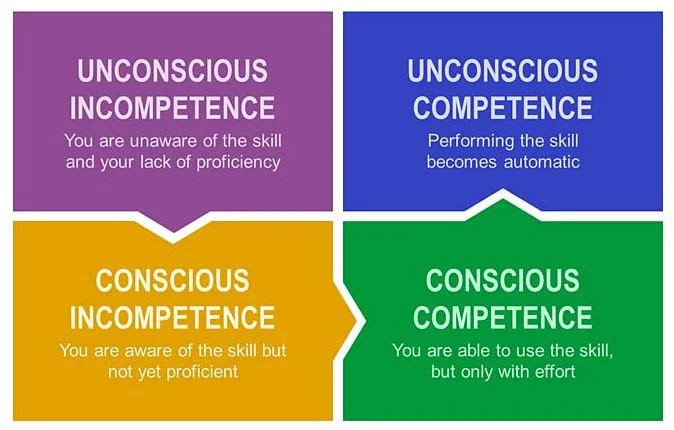Three Keys to Breathing to Improve Your Health
We can live for a month without food, a week without water, but only minutes without oxygen. The breath is the most fundamental part of our being. We are brought into this world with our first breath and we leave on our last breath. In today’s society, we focus on so many areas of self-improvement such as fitness, nutrition, and the mental game. However, few people focus on the one area that can help improve all of the other ones, the proper breathing. This article will give you three easy tips to begin focusing on your breath to improve your health and well-being.
“If you know the art of breathing you have the strength, wisdom, and courage of ten tigers.” Chinese proverb
1. Shut you mouth, save your life
Dysfunctional Breathing Patterns (“DBP”), (i.e. breathing into the upper-chest, mainly through the mouth, and without activating the diaphragm) is associated with the body’s stress response, resulting in a chronically stressed state. DBPs are associated with issues such as anxiety, asthma, insomnia, and cardiovascular issues.
Your nose is made for breathing. It warms and filters the air while allowing the proper ratio of carbon dioxide to oxygen to enter and exit your airways. When you breathe through your nose, the increased resistance will allow more oxygen to be offloaded into your tissues based on the increased levels of carbon dioxide in the blood. This is called the Bohr Effect. Nasal breathing also releases nitric oxide, which has strong anti-viral and antibacterial properties. It also opens up the airways allowing for more oxygen uptake to the tissues.
2. Get the Diaphragm moving
The diaphragm is the main breathing muscle and similar to other muscles in our bodies, needs to be worked. Diaphragmatic breathing allows more oxygen to reach the lower lobes of the lungs where there is greater blood flow. Properly using the diaphragm is important for core stability and posture. To breathe with your diaphragm, start by inhaling through the nose, deep into your belly. Think about expanding your ribs horizontally instead of moving your shoulders vertically. Then, exhale through your nose, contracting your belly to the spine. Breathing in this manner, puts our nervous system in the parasympathetic state, allowing us to rest, relax, and digest. Additionally, we are able to get out of the stressful state, lower our heart rate, improve cognitive function, and increase creativity.
3. Begin a daily practice
In addition to breathing properly, beginning a daily conscious breath practice is extremely important. Learning to access your breath will allow you to change your mental state, allowing you to transition from tense and stressed out to calm and relaxed. It also allows you the opportunity to step back from a problem at hand and to look at it with fresh eyes. You will learn to slow down and respond in stressful situations instead of react. One of the easiest ways to calm the system and control your emotions is to incorporate a technique into your daily practiced called “cadence-breathing.” I encourage you to try it right now. Close your eyes and inhale through your nose for a count of three, hold for three seconds, exhale through your nose for six seconds, and then hold for three seconds. This is one of many breathing protocols we like to use. This technique works great for stress relief as the longer exhale to inhale is an added parasympathetic trigger to help the mind and body relax.
Putting it all together
The first step in changing behavior is through awareness. As you go through your day, become aware of how you are breathing. Are you breathing through your nose or your mouth? When you become stressed, how does your breathing pattern change? Do you typically breathe into your upper-chest or horizontally, activating the diaphragm? Breathing is something you must do every day and it is important to learn to do it properly. Proper breathing will improve many areas of your life such as: sleep, anxiety, asthma, allergies, and even digestive issues. Once you learn to breathe properly, beginning a daily breath practice is essential to changing your behavior. This can take as little as five minutes a day. With a consistent practice, you will discover methods that place you in a calm focused state before the big game or meeting or stop you from over-reacting when your kids are going crazy or you have a disagreement with your partner.
As you expand your daily breath practice, Symmetry is here to help. I have made it easy for you to begin a practice at home with pre-recorded and guided sessions on Insight Timer. These sessions range from five to thirty minutes and are available at no cost to you. We come into this world on our first breath and leave on our last, that is how important proper breathing is to a healthy life.
Call to Action
If you are looking for more individualized help, check out my website www.symmetry.live I create individualized breath programs for my clients to help them achieve their goals. I also incorporate heat and ice contrast therapy, perfect for your recovery, taking you to the next level of your training.
If you enjoyed this post, you can also signup for my free weekly newsletter, The Long Game. The Long Game is a newsletter for people that want to grow and challenge themselves. It is about the drive to better ourselves mentally, physically, and spiritually while having the curiosity to enjoy the journey.






